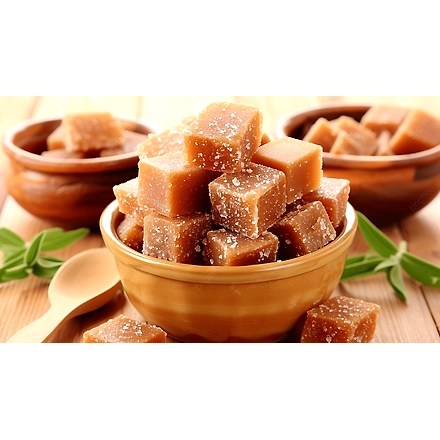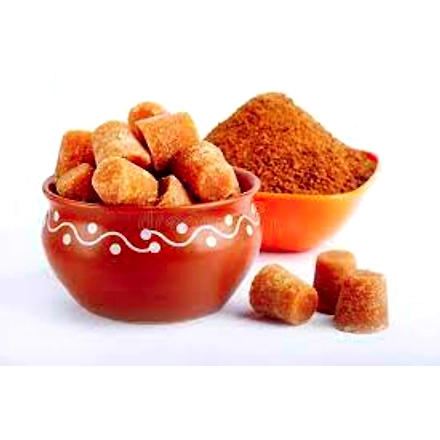- (+91) 6263957665
- revantrit@gmail.com
- Omex Hill, , Indore, Madhya Pradesh, India. 452020
© 2020 Revant Group. All Rights Reserved
Good
Jaggery
-
Product is not available
Customisation
Good *
File Formats: jpg, Png, Pdf, Doc, Xls, Ppt, Cad, Dwg, Dxf,Zip, Rar, 7z | Max File size: 20MB
1000 KGS (Kilograms)
Yes
Fulfilment Capacity (Per Month): 100 KGS (Kilograms)
17011310
Country Of Origin : India
Jaggery is also known as gur in India. Jaggery is a traditional sweetener, unrefined sweetener made from the juice of sugarcane or palm trees that is popular in Madhya Pradesh :
Appearance : Jaggery is a semisolid mass that can be solid, liquid, or granulated. It can range in color from golden brown to dark brown.
Taste : Jaggery has a sweet, winy fragrance and a taste similar to brown sugar or molasses.
Nutrition : Jaggery is high in minerals, proteins, and vitamins, including iron, calcium, and magnesium. It contains up to 50% sucrose, up to 20% invert sugars, and up to 20% moisture.
Uses : Jaggery is used in a variety of traditional snacks, including chikki, naru, and laadu. It can also be used in traditional alcoholic drinks and for non-food purposes like dying fabric.
Health claims : Some common health claims for jaggery include improved digestive health, anemia prevention, liver detoxification, and improved immune function.
History : The earliest reference to jaggery can be found in ancient Indian scriptures dating back to 3000 BC.
Color : Jaggery from M.P. is dark yellow or ochre yellow in color.
Nutritional value : Jaggery is rich in nutrients like iron, magnesium, potassium, calcium, and B vitamins.
Health benefits : Jaggery is a healthy alternative to refined sugar and can be used to balance the flavor of savory dishes. It can also be mixed into tea or coffee.
Purity : Good quality jaggery has a consistent texture, dissolves easily in water, and leaves minimal residue.
Historically, the sugarcane cultivators used crushers that were powered by oxen, but all modern crushers are power-driven. These crushers are placed in fields near the sugarcane plants. The cut and cleaned sugarcane is crushed and the extracted cane juice is collected in a large vessel. A quantity of the juice is transferred to a smaller vessel for heating in a furnace.
The vessel is heated for about an hour. Dried wood pulp from the crushed sugarcane is traditionally used as fuel for the furnace. While boiling the juice, lime is added to it so that all the wood particles rise to the top of the juice in a froth, which is skimmed off. Finally, the juice is thickened.
This hot liquid is golden in colour. It is stirred continuously and lifted with a spatula to observe whether it forms a thread or drips while falling.
-
Additional Information
Jaggery is made of the products of sugarcane and the toddy palm tree. The sugar made from the sap of the date palm is more prized and less commonly available outside of the regions where it is made.[citation needed] The toddy palm is tapped for producing jaggery in India, Bangladesh, Pakistan, Nepal, Myanmar and Sri Lanka. Traditionally, the syrup is made by boiling raw sugarcane juice or palm sap in large, shallow, round-bottomed vessels.
-
Specification
Gud Best Qualtiy Jaggery -
Reviews ()
Write a Review














